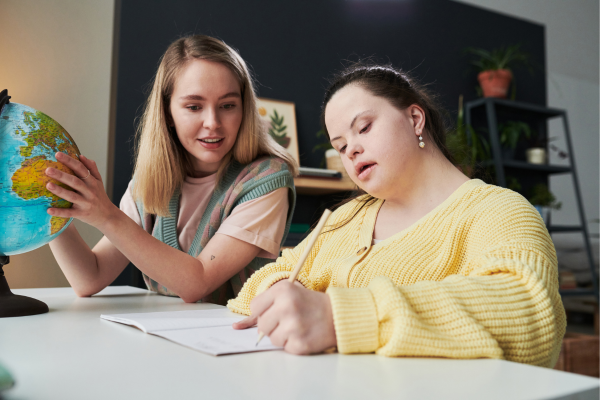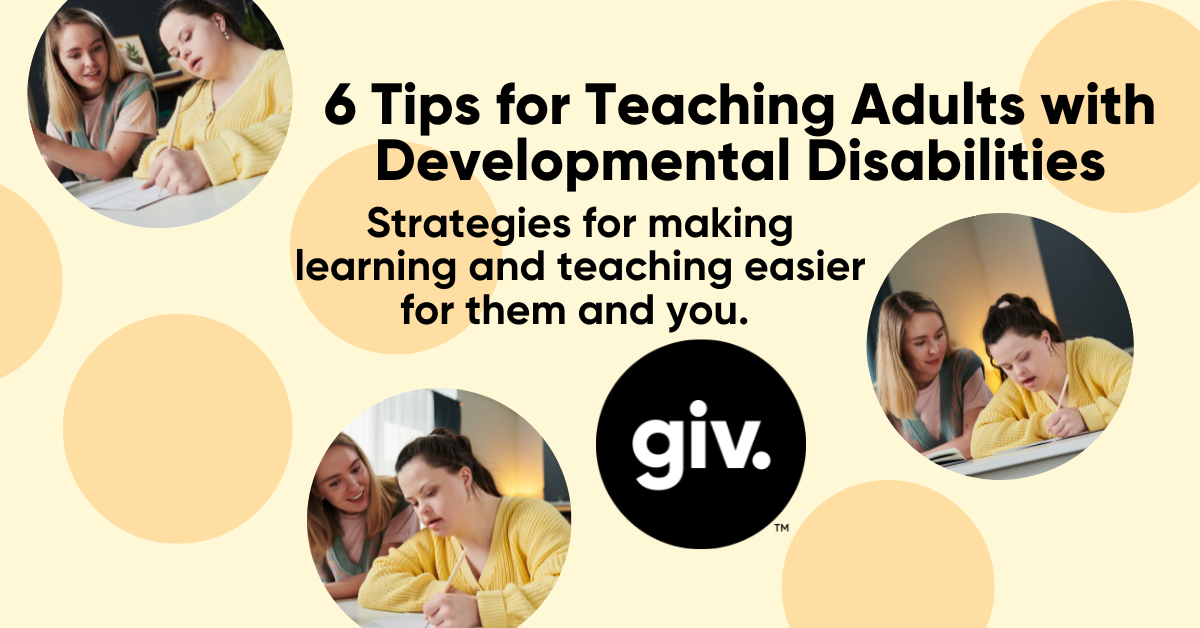When it comes to teaching adults with developmental disabilities, it’s essential to approach the task with patience, empathy, and a deep understanding of their unique needs. These individuals often require tailored strategies and support to help them reach their full potential. Here are six practical tips on how caregivers and educators can effectively teach adults with developmental disabilities. From individualized instruction to creating an inclusive and supportive environment.
Individualized Instruction
Teaching adults with developmental disabilities begins with recognizing that each person is unique. There is no one-size-fits-all approach. It’s crucial to take the time to understand each individual’s strengths, weaknesses, and learning styles. By tailoring instruction to their specific needs, caregivers and educators can help these adults thrive.
One effective approach is to conduct assessments or interviews to gain insights into their abilities, preferences, and any challenges they may face in the learning process. This information can guide the development of personalized lesson plans and strategies. For example, if an adult with developmental disabilities excels in visual learning, incorporating more visual aids like pictures, charts, or diagrams can enhance their understanding and retention of information.
Clear Communication
Clear and straightforward communication is essential when teaching adults with developmental disabilities. Using simple language and avoiding jargon or complex sentences can make a world of difference. Start with the basics, and gradually build upon their knowledge.
Visual aids can be powerful tools for reinforcing verbal instructions. For instance, if you’re teaching a cooking skill, accompany your verbal guidance with pictures of the ingredients and equipment needed, as well as step-by-step visual instructions. This combination of clear language and visual cues can help adults with developmental disabilities grasp concepts more easily.

Structured Routine
Creating a predictable routine or schedule for lessons is another crucial element in teaching adults with developmental disabilities. Consistency and structure can provide a sense of security and help reduce anxiety. Begin each lesson with a familiar routine, such as a brief recap of the previous session’s material, followed by the day’s objectives.
It’s also important to provide clear and simple instructions for any transitions or changes in activities. Communicate these changes well in advance, so individuals have time to mentally prepare. By maintaining a structured routine, caregivers and educators can help adults with developmental disabilities feel more comfortable and confident in their learning environment.
Positive Reinforcement
Positive reinforcement plays a significant role in motivating and empowering adults with developmental disabilities. Acknowledge their efforts and achievements regularly, no matter how small they may seem. Praise can boost their self-esteem and encourage continued learning.
Consider implementing a reward system or using their personal interests as incentives. For example, if someone enjoys painting, promise them extra time for creative activities after they complete their lessons. Positive reinforcement not only makes learning more enjoyable but also reinforces the idea that effort leads to rewards.

Adaptive Teaching Tools
To accommodate diverse learning needs, caregivers and educators should utilize a variety of teaching tools and methods. This may include hands-on activities, interactive software, or assistive technologies like communication devices.
Breaking down complex tasks into smaller, manageable steps is particularly helpful. Provide guidance and support at each stage of the learning process. For instance, if you’re teaching a skill like basic money management, start with counting small amounts of money and gradually increase the complexity as they become more comfortable.
Inclusive and Supportive Environment
Fostering an inclusive and supportive learning environment is essential for the growth and development of adults with developmental disabilities. Encourage peer interaction and collaboration to build social skills. Create opportunities for them to work together on projects or activities, fostering a sense of belonging and teamwork.
Involving caregivers and family members in the learning process is also beneficial. They can provide valuable insights into the individual’s strengths and areas that need improvement. Additionally, caregivers can reinforce the skills and knowledge learned during lessons at home, creating a more cohesive approach to education and care.

In conclusion, teaching adults with developmental disabilities requires a patient, empathetic, and individualized approach. By focusing on clear communication, structured routines, positive reinforcement, adaptive teaching tools, and an inclusive environment, caregivers and educators can make a profound impact on the lives of these individuals. Every step toward enhancing their abilities and independence is a step toward a brighter future for adults with developmental disabilities.






